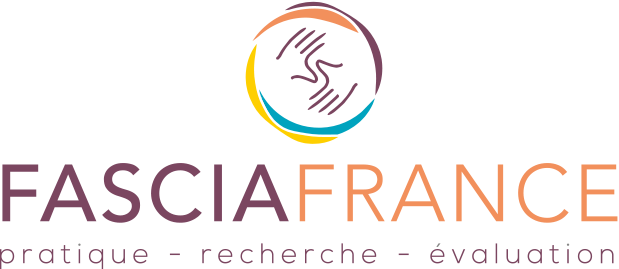Christian Courraud*, Danis Bois*, Anne Lieutaud*
*CERAP, Centre for Applied Research and Studies in Perceptual Psychoeducation, UFP, Porto.
Session Poster – British Fascia Symposium 2016 – Worcester (United Kingdom)
Abstract :
- Hypotheses and objectives
Regarding the opportunity for physiotherapists to integrate knowledge about fascia within their clinical practice and to develop a new perspective about somatic disorders [1], we hypothesize that physiotherapists practising DBM Fasciatherapy may have made professional adjustments, and in particular identity shifts [2].
This research investigates the existence of identity changes amongst French physiotherapists who practise Fasciatherapy. A quantitative survey was conducted amongst a population of practitioners, with a view to:
- Identifying the impacts of the changes resulting from Fasciatherapy practice
- Exploring and characterizing the existence of various identity profiles
Material and method
We used a self-administered customized questionnaire investigating 5 dimensions: professional characteristics, professional identity features, DBM Fasciatherapy practice modalities, changes in the professional practice and impacts on professional and private life. The questionnaire was forwarded through the internet to a population of 446 physiotherapists trained in Fasciatherapy.
Results
General characteristics of the data and the population:
- 238 questionnaires were completed (53% of the population surveyed).
- They are mostly women (65%), between 30 and 44 years old (44%), preferably using manual therapy techniques (70,2% having a speciality in that field) ;
An in-depth descriptive statistical analysis shows a large diversity of impacts and changes that the respondents associate to their practice of Fasciatherapy:
- 45% have started their own practice after the training, 75,6% see their patient base changing, 54,6% have broadened their patient intake (with more chronic conditions) ;
We then carried out a multivariate analysis to study how such changes could be associated vith varying identity profiles.
- 3 Identity profiles appeared significant, characterised and opposed to one another : Physiotherapist profile (17,6% of the sample), Physio-fasciatherapist profile (55,5% of the sample), Fasciatherapist profile (26,9 % of the sample)
Discussion and conclusion
Practising Fasciatherapy has an impact on the professional practice and identity traits. A significant proportion of the practitioners combine the identities of physiotherapist and fasciatherapist, and few of them remain physiotherapists. These profiles are defined with regards to the statutory, professional and practical characteristics of Fasciatherapy.
Disclosure: this research was conducted without any external institutional financial support
References:
[1] Kwong, E. H., Findley, T. W. (2014). Fascia-Current knowledge and future directions in physiatry : Narrative review. The Journal of Rehabilitation Research and Development. Volume 51. n° 6. p. 875-884
[2] Courraud, C. (2012). Au carrefour de la kinésithérapie et de la fasciathérapie – Approche exploratoire des reconfigurations identitaires des kinésithérapeutes formés à la fasciathérapie. Réciprocités. n°6 novembre 2012. Revue du CERAP. p. 20-35.

